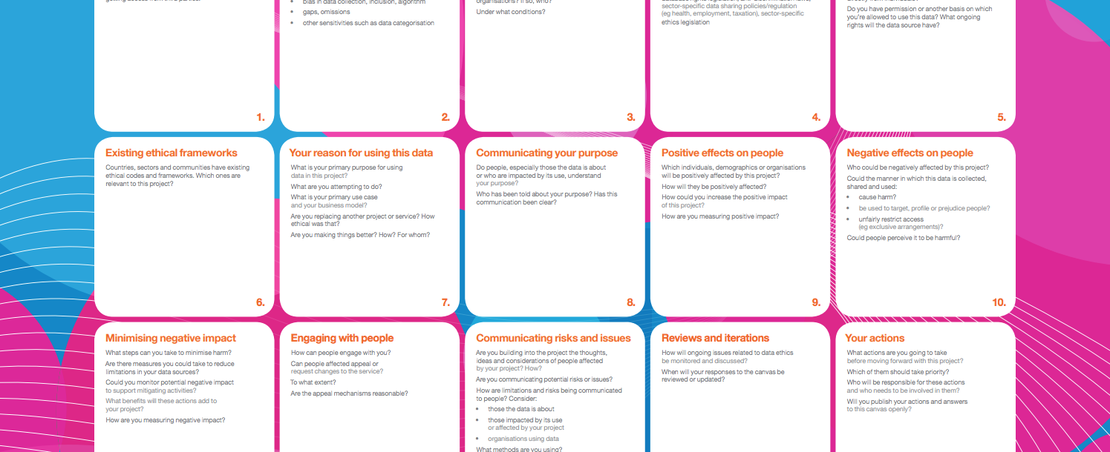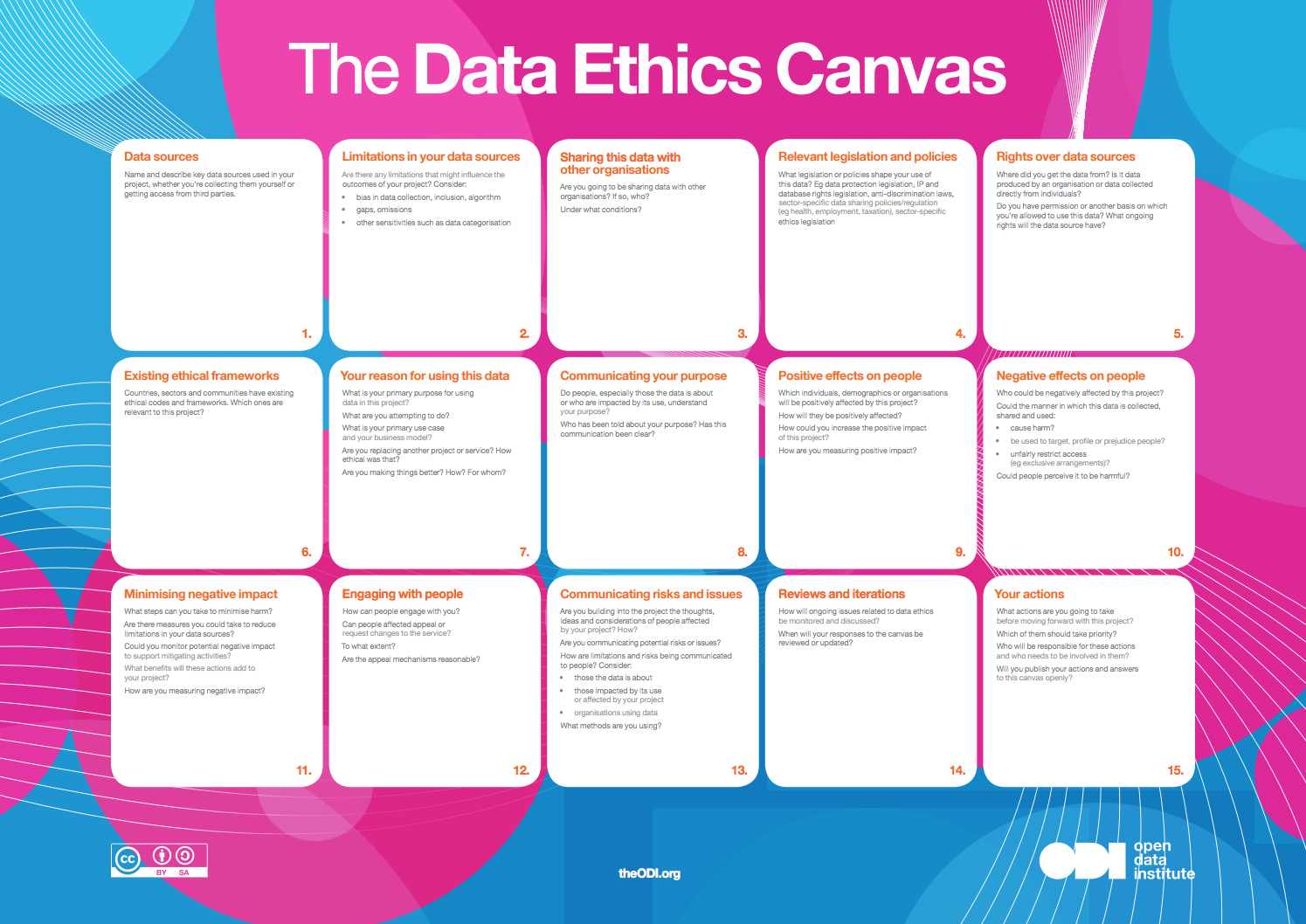
A few months after launching the first version of our Data Ethics Canvas and guide, it's time for an update. Here’s what we've changed, why, and what we're doing next.
We launched the first version of our data ethics canvas and guide in September 2017, for organisations to identify and manage potential data ethics considerations.
In the months since then, we've learnt some more things from using it, from watching other people use it, and from the great feedback we had. Some of that work has been in the UK – for example working with people who won funding from our innovation programme to redesign public services – and others were outside the UK.
We're about to start some more workshops with organisations, and we're going to be using a new version of the canvas. Here’s what's been updated and how you can get involved.

The aim of the canvas
Our aim is not to tell people what ethical decisions to make. That would be silly.
While the world clearly has some universal rights and we have our own ethical positions – after all, we believe in knowledge for everyone – as we go into more detailed decisions then those made in our HQ in London might differ from the decisions appropriate for a particular sector (like health, or transport, or sports) or the decisions appropriate for a particular group of people.
Our aim is also not simply to get the canvas used. The tool is not the goal.
Instead our aim is to help people understand the decisions that need to be made to reduce adverse impact – and how to make and communicate them – both as project teams and more broadly to those who could be impacted by decisions about data.
Over time, we expect and want decisions about data ethics to become standard practice. That will help governments, businesses, civil society and citizens get more social and economic value from data. Until ethical behaviour becomes normal, the canvas has a place to help make that happen.
Some people missed things in the original canvas
We've moved the box asking about existing laws and policies to the top row. Too many people missed it on first looking at the canvas. That wasn't helpful as it stopped some people engaging.
We also changed the box asking organisations to think about how they were communicating, to make clearer its intention to make them think about what they tell people and how they talk with them.
We added a reference to data subjects to this box, but only in the detailed text. One of the misconceptions that we want to clear up in our work on data ethics is the notion that all ethical issues are about personal data. Only referring to ‘data subjects’ can also mean people don’t consider the impacts of their work, product or service, on those that aren’t described in the data they use.
Some things we missed in the original canvas
Data ethics is a very broad subject, and a canvas can’t cover every question. But some things came up in feedback and testing that we felt were important enough to be added to the canvas.
We added a new box to help people think about existing ethical frameworks. Although not all ethical frameworks are written down, many already exist in organisations, countries and sectors. One of the most famous is medical ethics that started in ancient Greece with the Hippocratic Oath. Data projects often take place in contexts where ethical frameworks already exist. Those frameworks can help people decide how to act on the information revealed by the Data Ethics Canvas.
We added a couple of questions about what the data project was replacing. Perfect projects are rarely possible, and sometimes making things better is a reasonable outcome. Although it is useful to think about which groups or individuals are benefitting, or losing out, from the changes.
We added a couple of questions about how impact is measured. Measurement techniques are important – there can often be something missing. For centuries, Australia didn’t recognise the citizenship of Indigenous Australians and didn't count them in official statistics.
Finally, we tweaked some of the wording and added a box where an organisation can name the person responsible for getting the Data Ethics Canvas made and keeping it up to date.
A better user guide, better printouts, and a sample workshop plan
Alright, we'll admit it. We made the first guide pretty quickly. Our focus was on getting the canvas openly available so we could learn from seeing people use it – and we did learn.
After helping and watching people use – and in some cases fail to use – the initial canvas and guide, we’ve created a much better user guide (thanks Rebecca and Anna!), a template workshop plan and set of slides (thanks Jack!), and some new designs for the canvas (thanks Caley!) to help workshops run well. There's even a snazzy fold-up printed version.
We'll keep iterating
So, what's next?
Some organisations have said they’d like us to run workshops to help them understand ethical issues and how to fill out the canvas. Others have told us they’d like to include the questions from the canvas in their standard way of working. We think that’s great! And we will keep iterating, improving and openly publishing our work on data ethics as we help them.
If you are getting to grips with ethical data use in your organisation, the ODI offers workshops, coaching and resources designed to help you navigate them. Speak with us at [email protected] to find out more.